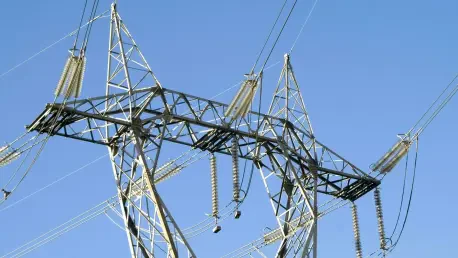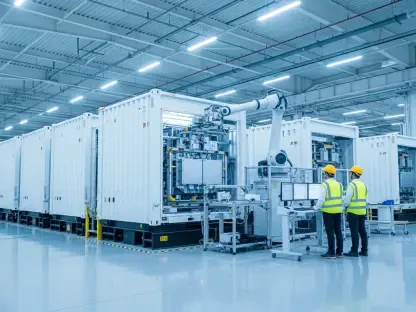California’s electric grid is facing unprecedented demand due to factors like rapid urban development and technology proliferation in major areas such as San Jose. The expansion of data centers has become a focal point, with projections indicating a significant load increase in the coming years. To address this surge efficiently, Pacific Gas and Electric Company (PG&E) has joined forces with Smart Wires to deploy innovative advanced power flow control (APFC) technology. This collaboration targets enhancing the capacity and reliability of PG&E’s grid infrastructure, primarily at the Los Esteros substation. The initiative underscores the critical need for adaptable solutions to ensure a stable power supply ahead of the completion of a new transmission line, which remains years away.
Addressing Growing Energy Demands
The Challenge of Increased Load
The increasing establishment of data centers in San Jose is not just a marker of technological growth but a catalyst for profound energy demand challenges. These centers are slated to generate a power demand increase that could reach up to 500 MW. Such vast energy consumption rates press upon existing infrastructure, posing risks of thermal overload and inefficiency. Faced with these projections, PG&E’s conventional methods, such as building new transmission lines or reconductoring, appear inadequate due to the long timelines and disruptions involved.
In the quest for immediacy and efficacy, APFC technology stands out as a frontrunner. Through comprehensive assessments led by the California Independent System Operator (CAISO), APFC with SmartValve systems surfaced as the most viable remedy. This modern technology has the capability to dynamically redirect power flows, alleviate thermal overload, and maximize the efficiency of existing grid structures. Unlike traditional alternatives, these smart solutions offer flexibility that is both rapid and scalable, tailoring responses to current and future demand challenges while bypassing the conventional bottlenecks associated with grid enhancements.
Smart Wires’ Technological Edge
Smart Wires’ contribution to the electric grid’s transformation hinges on its sophisticated SmartValve devices, which facilitate advanced power flow control. These devices redefine operational paradigms by adjusting power flows in real-time, obviating the need for extensive infrastructure overhauls. The SmartValve system effectively ensures operational continuity and mitigates potential overloads by dynamically balancing power across the grid, thus optimizing existing assets.
This technology revolutionizes capacity management by leveraging fast, digital sensors and algorithms, which can respond to grid conditions nearly instantaneously. It not only manages current demands efficiently but also sets the stage for a future-proof grid environment. The strategic deployment of these devices empowers utilities to allocate power more efficiently, enhancing reliability and reducing the need for disruptive construction projects. Moreover, these devices improve cost-effectiveness by deferring larger capital expenditures associated with traditional grid enhancements.
Benefits Beyond Immediate Needs
Long-term Implications and Scalability
Although an immediate response to the burgeoning demand is critical, the deployment of Smart Wires’ APFC technology has implications that extend well beyond the short-term horizon. While the new transmission line is anticipated to come online in several years, the APFC technology will ensure that upgraded grid infrastructure retains its value in the long run. This scalability is a critical factor in future-proofing California’s electric grid, ensuring it can meet not only present demands but also adapt to evolving energy consumption patterns.
This futuristic flexibility directly complements California’s broader sustainability goals. By minimizing reliance on massive infrastructural projects, APFC technology reduces environmental impacts, cutting down both emissions and resource use associated with traditional construction methods. Additionally, the technology’s ability to dynamically manage and reroute power flows allows for greater integration of renewable energy sources, driving the state closer to its clean energy targets.
Economic and Operational Efficiency
While environmental considerations are pivotal, economic and operational efficiencies also play a vital role in the broader adoption of Smart Wires’ technology. By transforming existing assets into more efficient systems, utilities can sidestep the high costs typically associated with constructing new transmission lines and upgrading existing ones. This strategy not only delivers immediate cost savings but also improves the return on existing infrastructure investments.
The operational benefits are equally compelling. Utilities equipped with flexible, dynamic control over power flows can optimize grid reliability, effectively responding to fluctuations in energy supply and demand. This capability translates into fewer disruptions for consumers and businesses, ensuring a stable supply that fuels economic activity and growth. Further, by embedding adaptability into grid management, utilities can better navigate the unpredictable terrains of energy consumption changes that characterize today’s fast-paced technological landscape.
Future Considerations for Energy Infrastructure
Strategic Significance of Technology Adoption
The collaboration between PG&E and Smart Wires serves as a model of strategic technological adoption aimed at sustaining operational continuity amidst surging demand. As utilities worldwide grapple with similar challenges of increasing urbanization and technological expansion, solutions like SmartValve can represent significant value for systems seeking modernization without the excess baggage of heavy infrastructure investments. With the power flow adapted to immediate needs and the potential to scale for long-term development, such technologies could pave the way for a responsive, agile energy future.
Exploring beyond technology deployment, this collaboration may spark further innovation in the energy sector, prompting advances in grid management solutions that are smarter and more sustainable. This could lead to heightened community engagement, policies promoting green technologies, and the nurturing of partnerships between technology firms and utility providers. Ultimately, the transition toward a resilient grid not only meets instantaneous needs but also shapes a forward-looking pathway aligned with environmental and economic advantages.
Reflecting on Broader Trends
The push for innovative solutions to bolster California’s electric grid reflects a broader trend within the global energy sector — an emphasis on operational efficiency and sustainability. As the world grapples with the effects of climate change, implementing adaptable, efficient solutions is more crucial than ever. Real-time power flow control and infrastructure optimization are pivotal steps forward, reducing dependencies on the conventional grid expansion methodologies that have long dominated the industry.
The strategic emphasis on flexible and rapid solutions allows utilities in California, and potentially worldwide, to efficiently manage and distribute power, ultimately minimizing the ecological footprint left by larger infrastructural projects. The ongoing partnerships and technological investments indicate more than just an immediate response; they signal a transformative shift in energy management philosophies, favoring cutting-edge advancements that squarely place community energy needs at the forefront of infrastructural planning.
Moving Forward with Energy Innovation
California’s electric grid is grappling with unprecedented demand, driven by factors like rapid urban expansion and the proliferation of cutting-edge technology, notably in bustling regions such as San Jose. The boom in data centers has emerged as a critical focus, with forecasts predicting a substantial increase in power load in the years ahead. To tackle this mounting pressure, Pacific Gas and Electric Company (PG&E) has partnered with Smart Wires to implement cutting-edge advanced power flow control technology. This collaboration aims to bolster the capacity and reliability of PG&E’s grid infrastructure, particularly at the Los Esteros substation. The initiative highlights the urgent need for adaptable solutions to secure a stable power supply, an essential measure given that a new transmission line is still years away from completion. The effort not only sets the stage for meeting immediate energy needs but also lays a foundation for sustainable growth amid a rapidly evolving technological landscape.









